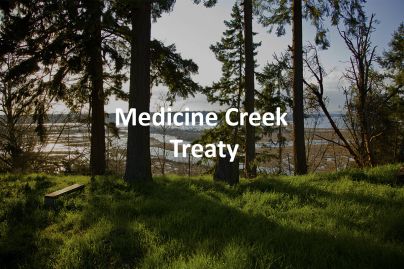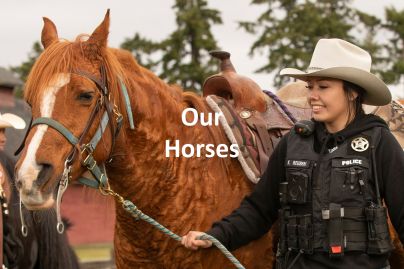Heritage

About Us
For 10,000 years the Nisqually Tribe lived in relative peace and prosperity in its aboriginal homeland of about 2 million acres near the present-day towns of Olympia, Tenino, and Dupont, and extending to Mount Rainier. Tribal life changed radically with the advent of Euro-American settlement about 150 years ago. Forced to compromise its interests and rights over the years, the Tribe has always sought to maintain its integrity and dignity.
Culture
The Nisqually people have lived in the watershed for thousands of years. According to legend, the Squalli-absch (ancestors of the modern Nisqually Indian Tribe), came north from the Great Basin, crossed the Cascade Mountain Range and erected their first village in a basin now known as Skate Creek, just outside the Nisqually River Watershed's southern boundary. Later, a major village would be located near the Mashel River.
The Nisqually have always been a fishing people. The salmon has not only been the mainstay of their diet, but the foundation of their culture as well. The Nisqually Tribe is the prime steward of the Nisqually River fisheries resources, and operate two fish hatcheries: one on Clear Creek and one on Kalama Creek.
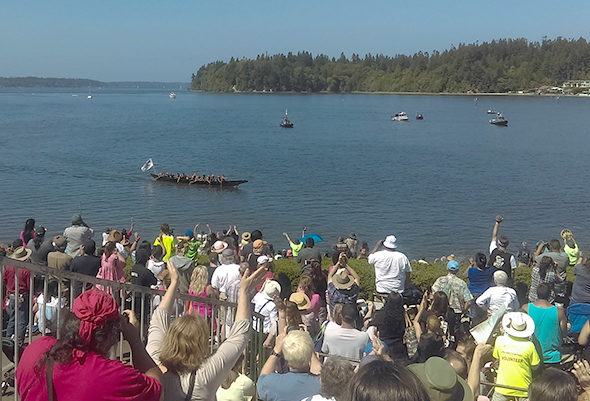
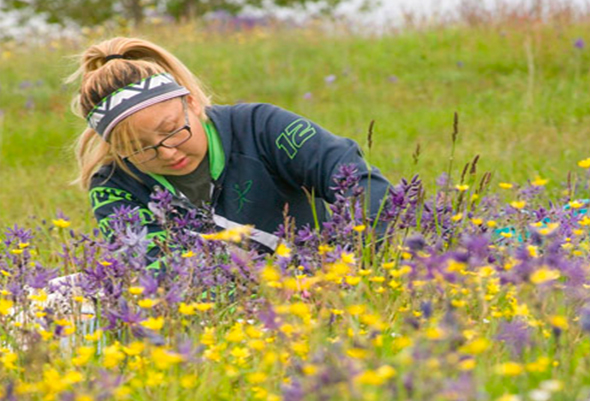
Land
The Nisqually Tribe is located on the Nisqually River in rural Thurston County, 15 miles east of Olympia, Washington. As of the year 2005, the Tribe had a service area population of 5,719 Native Americans, 600 of whom are enrolled Nisqually which reside on the reservation. An additional 5,119 of the service population live off the reservation in Thurston and Pierce Counties. Tribal land holdings, on and near the Nisqually reservation, exceed 1,000 acres -- all of which have been reacquired in the past 25 years.
The Nisqually reservation is approximately 5,000 acres in size. That portion of the reservation located north and east of the Nisqually River (3,300 acres) is under the control of Fort Lewis military base and serves as an impact area. The remaining portion (1,700 acres) is in a combination of tribal ownership (450 acres), private Indian Allotments (800 acres), or held by non-Indian owners (450 acres). Virtually all development that has taken place on the reservation within the past 18 years has been on tribally owned lands.
History
Our people lived in the south Puget Sound watershed long before 1833, when Fort Nisqually was established as the first white settlement on Puget Sound. The Nisqually people came north from the Great Basin, across the Cascade Mountains, to settle near the Mashel River. We were a fishing people, living off of the rich bounty of the river, and sustaining life for our home and environment. The Nisqually Reservation, as it has become known today, was established by the Medicine Creek Treaty of December 26, 1854, although whether the great Nisqually Chief Leschi had agreed to the treaty was heavily disputed. Still, our people were re-established on a reservation consisting of 1,280 acres in what is now Thurston County.
On January 20, 1856 an executive order enlarged it to 4,717 acres on both sides of the Nisqually River. On September 30, 1884 acreage was set aside and divided into 30 family allotments on both sides of the Nisqually River. The acreage didn't include the river. The people lived in peace for a while, harvesting fish from the river and shellfish, crabs, oysters and other seafood from Puget Sound. In the winter of 1917 the U.S. Army moved onto Nisqually lands and ordered them from their homes without any warning. Later, Pierce County condemned 3,353 acres of Nisqually land and transferred it to the Army to expand the Fort Lewis base.
Today, our tribe has more than 650 enrolled members, the majority of whom live on or near the reservation. We are an entrepreneurial tribe that has grown to become one of the largest employers in Thurston County, while building a national reputation for our environmental stewardship programs protecting and enhancing our natural environment for decades.
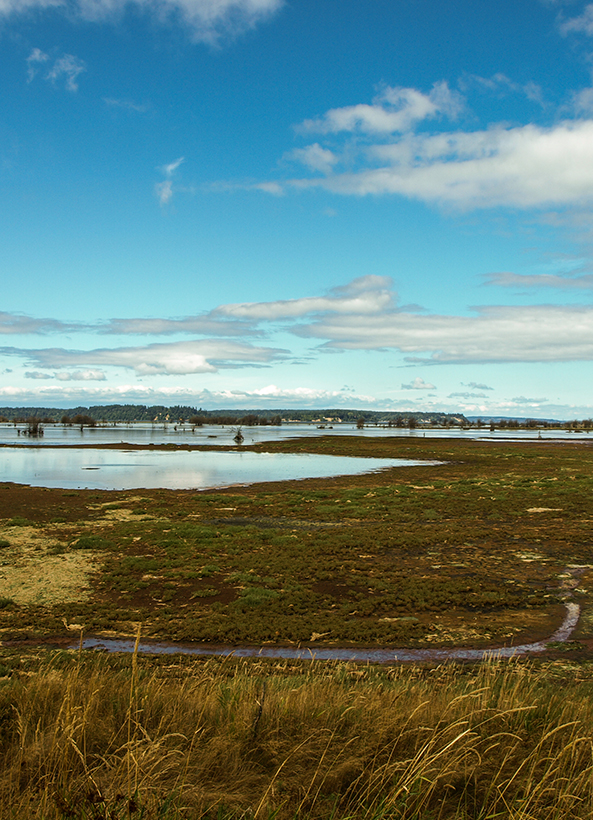
We Are Nisqually Strong
People of the River, People of the Grass

